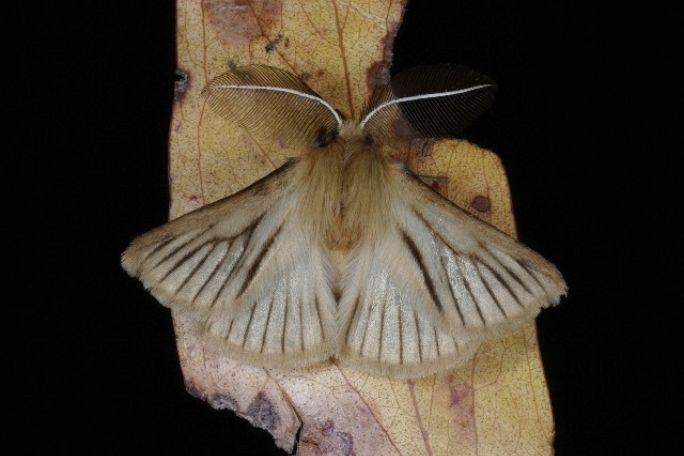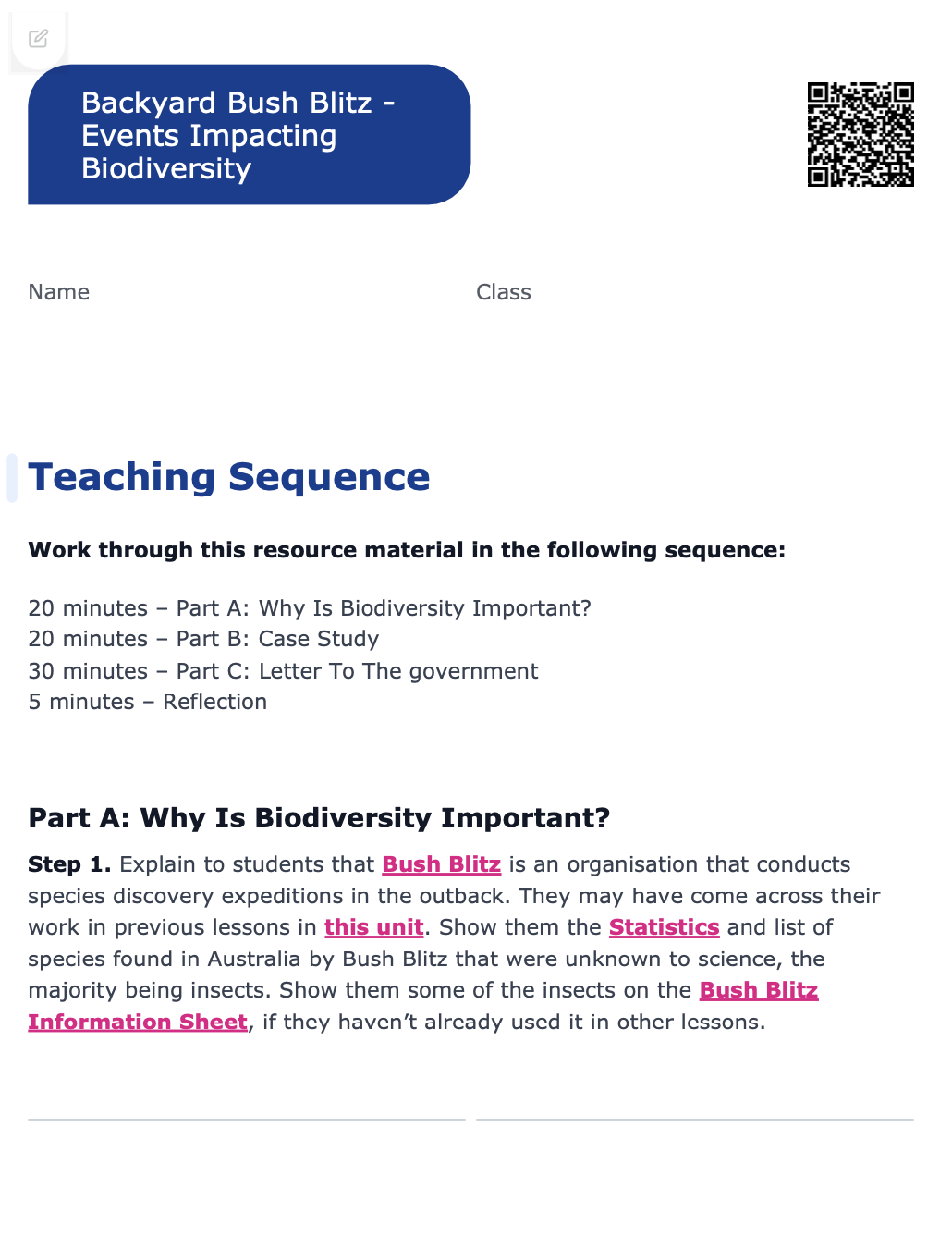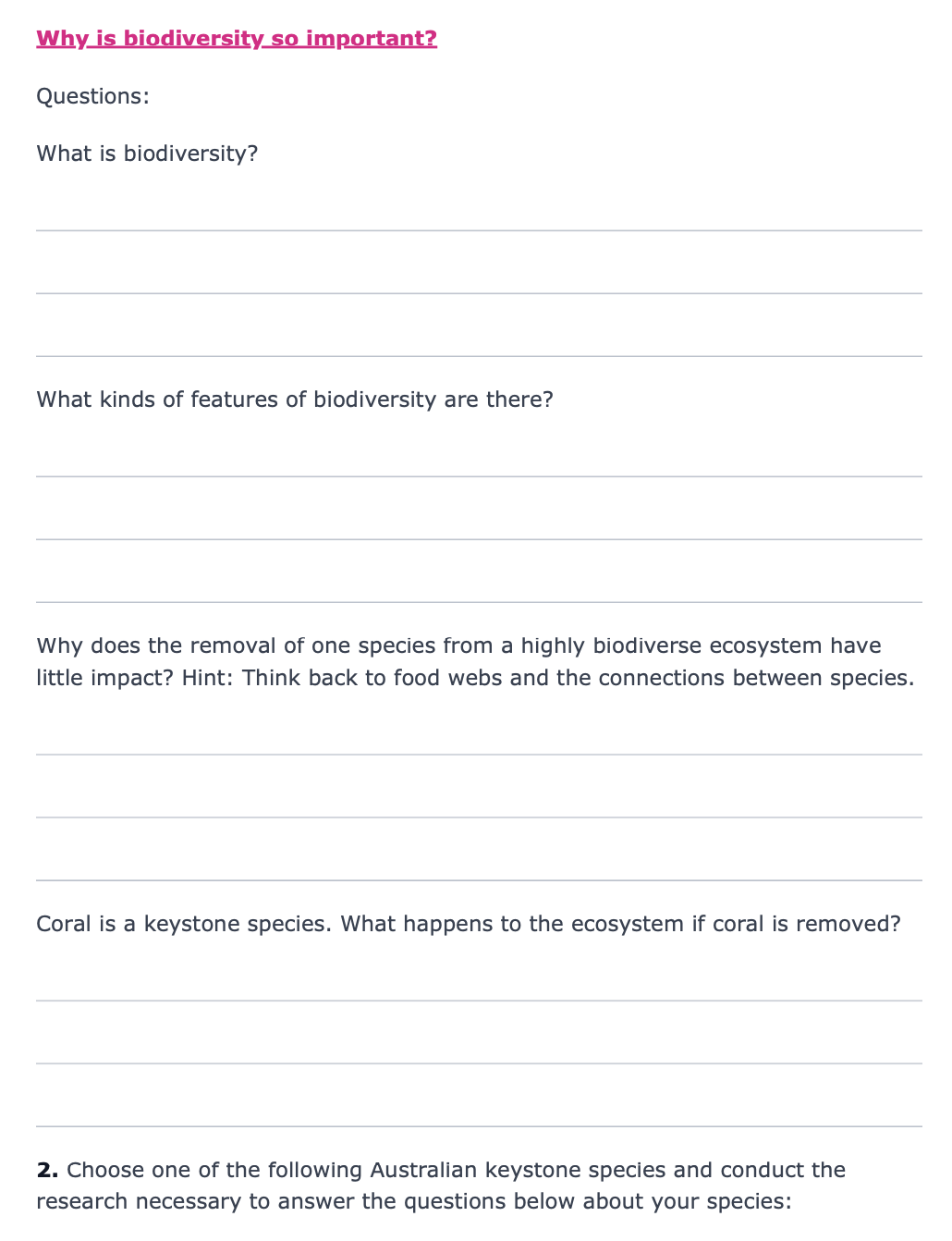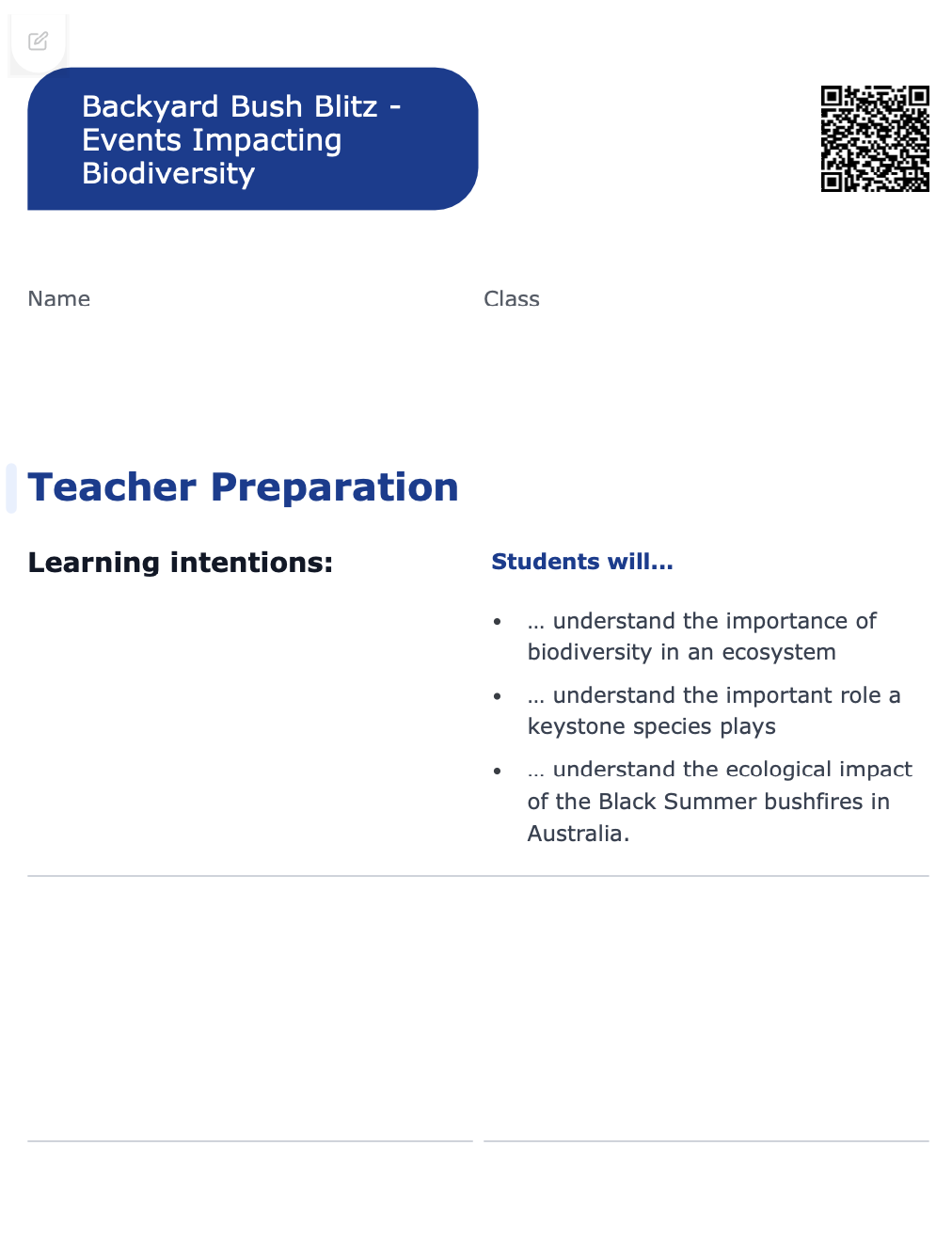Lesson summary
Students will learn about biodiversity and the role keystone species play in the health of an ecosystem. They will then research the Black Summer Australian bushfires as a case study of an event that had significant biodiversity loss. Using the information learnt, they will write a letter to the government to convince them to enact change in how Australia manages the land and conserves biodiversity.
Learning intentions:
Students will...
- understand the importance of biodiversity in an ecosystem
- understand the important role a keystone species plays
- understand the ecological impact of the Black Summer bushfires in Australia.
Success criteria:
Students can...
- explain the features and benefits of biodiversity
- conduct research and communicate findings
- explain the relationship between wildfire and biodiversity loss
- work independently and collaboratively
- compose an informative letter to the government.
Lesson guides and printables
Lesson details
Curriculum mapping
Australian Curriculum content descriptions:
Year 7 Science:
- Use models, including food webs, to represent matter and energy flow in ecosystems and predict the impact of changing abiotic and biotic factors on populations (AC9S7U02)
Year 9 Science:
- Write and create texts to communicate ideas, findings and arguments effectively for identified purposes and audiences, including selection of appropriate content, language and text features, using digital tools as appropriate (AC9S9I08)
Syllabus outcomes: SC5-9WS, SC5-14LW.
General capabilities: Literacy, Creative and Critical Thinking.
Cross-curriculum priority: Sustainability
Relevant parts of Year 9 achievement standards: Students select and use content, language and text features effectively to achieve their purpose when communicating their ideas, findings and arguments to specific audiences.
This lesson is part of the wider unit of work Backyard Bush Blitz – Year 9
Time required: 75 mins
Level of teacher scaffolding: Low – Explain some facts about biodiversity and show a video to the class
Resources required
- Bush Blitz Information Sheet
- Device capable of presenting a video to the class
- Student devices with internet access
- Student Worksheets – one copy per student
Skills
- Communication
- Critical thinking
- Empathy
- Global citizenship
Additional info
Time required: 75 mins
Level of teacher scaffolding: Low – Explain some facts about biodiversity and show a video to the class
This is an original Cool+ lesson.




Welcome back!
Don't have an account yet?
Log in with:
By signing up to Cool.org you consent and agree to Cool's privacy policy to
store, manage and process your personal information. To read more, please see
our privacy policy here(Opens in new tab).
Create your free Cool.org account.
Many of our resources are free, with an option to upgrade to Cool+ for premium content.
Already have an account?
Sign up with:
By signing up to Cool.org you consent and agree to Cool's privacy policy to
store, manage and process your personal information. To read more, please see
our privacy policy here(Opens in new tab).